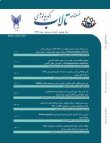The effect of forest land uses change on biodiversity of herbaceous species and soil physical and chemical properties (Case study: Chardavol river watershed, Ilam)
Changing the Land-uses of forests effects biodiversity and other ecosystem components. There is little information about biodiversity and soil characteristics in different Land-uses in Zagros forests. For this purpose, the effect of changing natural oak forests to coniferous plantations, deciduous plantation, rangeland, and agricultural on the biodiversity of herbaceous species and soil characteristics was investigated in the forests of Chardavol river, Ilam, in 2018. In each of the land uses, 5 square-shaped sample plots with dimensions of 20 × 20 meters were randomly taken, and in each of the main plots, four 1.5 × 1.5 square meters plots were used to check the herbaceous plant species. In order to check soil characteristics a mixed sample of soil was prepared at two depths of 0-5 and 5-15 cm in each plot. The results showed that different land uses have significant differences in terms of Shannon-wiener diversity and Margalof richness of herbaceous species. The highest value of Shannon-wiener diversity index was observed in rangeland and the lowest was observed in agricultural land uses. Also, the highest richness of herbaceous species was observed in rangeland. The results of soil characteristics at two depths showed that phosphorus and nitrogen were affected by land use and soil depth. The results show that the change in land use from the natural oak forest to agriculture and forest plantation has caused a decrease in biodiversity and richness of herbaceous species. Also, the change of land use to agriculture and forest plantation has caused an increase in salinity, bulk density, and a decrease in organic matter.


